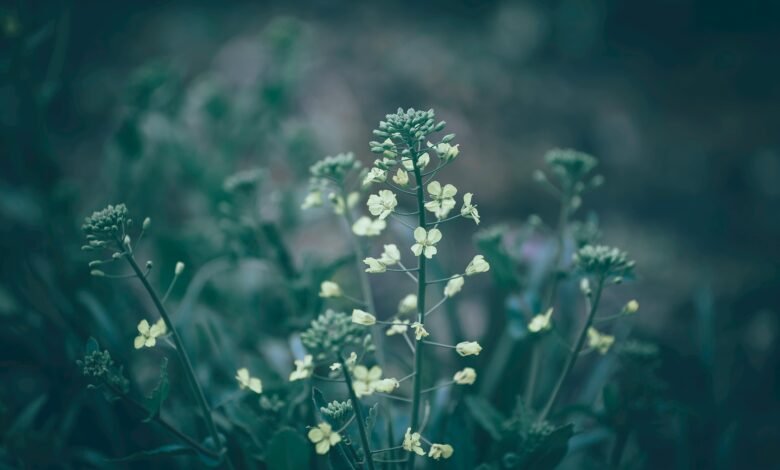The Beauty of Wildflowers: A Guide to Meadow Flora

Imagine a world where color bursts forth in a kaleidoscope of natural hues, where the very ground seems to shimmer with the vibrant life of a thousand living canvases. This is the enchanting realm of wildflowers, especially those that sway and dance in the untamed wilderness of meadows. They are a sight to behold, but they are also so much more. In this comprehensive guide, we will unfurl the story of meadow flora, not just as a picturesque vision but as a vital part of our natural ecosystem, cultural heritage, and even a potential in our own gardens.
Exploring Meadow Flora
The word ‘meadow’ might conjure up an idyllic picture of rolling hills or lush pastures, but its true beauty lies in the tapestry of wildflowers it weaves. Across the globe, meadows play host to a myriad of flowers, each with their own story and significance. These vivid patches of earth are more than just random collections of plants; they are complex ecosystems that support a vast array of wildlife, from the tiniest insects to magnificent herds of grazing animals.
Diversity of Wildflowers
Meadows are botanical treasure troves, harboring a rich diversity of plant life. The mix includes perennials, annuals, and biennials, and often a multitude of grass species that dance amidst the flowers. Some meadows are home to rare and endemic plant species, while in other cases, common varieties paint the landscape with a profusion of color. This diversity is crucial in maintaining the balance within the ecosystem, providing sustenance, shelter, and breeding grounds for a vast variety of animal life.
Importance of Meadow Ecosystems
Beyond their aesthetic appeal, meadows play a critical role in the broader environment. Their plants help prevent soil erosion, and the intricate root systems work as a natural sponge, aiding in flood prevention. Meadow flora also contributes significantly to the carbon cycle, absorbing and storing carbon dioxide. On a more local level, the prolific blooms in meadows support pollinators, ensuring the continuation of plant species both within the meadow and beyond.
Benefits of Wildflowers
The value of wildflowers extends far beyond their physical presence. They offer environmental benefits that ripple through the entire ecosystem, as well as significant aesthetic and cultural contributions to our lives.
Environmental Benefits
Wildflowers are champions of biodiversity. By providing nectar and pollen, they sustain a wide range of insects, which in turn support birds and other wildlife. They also serve as habitats for these and other creatures, making them indispensable to the preservation of species. From a conservation standpoint, they act as a reservoir for plant gene pools, essential for the long-term health of the environment.
Aesthetic Value and Cultural Significance
For humans, wildflowers offer a sensory experience that is hard to match. The sight of a meadow in full bloom, the scent of the flowers carried on a gentle breeze, and the gentle touch of petals underfoot are moments of pure joy. In many cultures, native wildflowers hold a special place—used in folklore, art, and medicine. They are symbols of freedom, love, and resilience, and often speak to the connection between people and nature.
How to Identify Wildflowers
Appreciating the beauty of wildflowers is enhanced when we can put a name to the face. Identifying these meadow plants can seem like a daunting task, especially with the sheer number of species one might encounter. However, a systematic approach guided by a few key characteristics can simplify the process.
Characteristics to Look For
When trying to identify a wildflower, observe details such as the color, arrangement, and shape of the petals. The stem, leaves, and overall growth habit are equally telling. Note the environment the plant is growing in—different species prefer different soils, light conditions, and moisture levels. Taking clear pictures and keeping detailed notes can be invaluable in the identification process.
Tools and Resources for Identification
Engage with the wealth of resources available. Field guides, apps, and online sources can all be useful, with many offering searchable databases categorized by region. Joining local botanical societies, attending guided walks, or even taking a course in plant identification can provide direct mentorship and enhance your skills in decoding nature’s floral signposts.
Creating a Wildflower Meadow
The allure of wildflowers is such that many are inspired to bring a slice of meadow life into their own gardens. Establishing a wildflower meadow is an act of creation, of designing with nature’s palette to build a haven for biodiversity.
Tips for Starting a Wildflower Garden
Begin with careful planning. Choose an area that receives ample sunlight, clear the ground of competing plants, and perhaps even selectively amend the soil to cater to the needs of the wildflowers you wish to grow. Seed selection is crucial—opt for a native mix to ensure ecological harmony, and consider the flowering times and heights of the plants to create a balanced and beautiful display throughout the season.
Best Practices for Maintenance and Preservation
Once your meadow is in bloom, resist the urge to intervene too much. Wildflowers are resilient and often self-sustaining. Manage the meadow through thoughtful mowing and occasional hand weeding. After a few seasons, you may even find that the meadow becomes a self-sustaining ecosystem, maintaining the floral diversity with its own natural processes.
Conclusion
Wildflowers, particularly those that grace our meadows, are much more than a mere spectacle. They are the colors of our ecological canvas, vital to the health and vitality of our world. To ensure that this beauty remains, we must not only take the time to appreciate and understand the wildflowers but also act to conserve the meadows they call home. Begin with small actions—support local conservation efforts, guide your gardening decisions with an eco-friendly eye, or simply take time to revel in the wildflowers’ transient beauty. With each step, you reinforce the interconnectedness of life and help preserve the wild splendor that defines our world.



